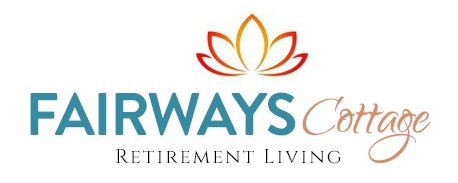Independent Living for Seniors: A Helpful Guide
If you’re reading this, chances are you or someone you care about is starting to think about what life might look like in the next chapter. Maybe the family home feels a bit too big these days, or the stairs are becoming more of a chore than a convenience. Maybe it’s just time for more ease, more connection, or a sense of community. Whatever brought you here, I want to reassure you: independent living is not about giving something up. It’s about stepping into something new—with dignity, confidence, and choice.
In this guide, I’ll walk you through everything you need to know about independent living for seniors. We’ll talk about what it really means (it’s not a one-size-fits-all term), who it’s for, the different types of communities out there, and how to know if it’s the right move for you or a loved one. I’ll also share practical tips on budgeting, making the transition, and what to look for when touring a place.
This isn’t just another surface-level overview. This is the guide I wish every family had—a real, honest, compassionate resource. I’ve worked with hundreds of seniors and their families over the years, and one thing is always true: the more informed you are, the better the outcome. So let’s take a deep breath, pour a cup of tea, and start this journey together.
Understanding Independent Living
Let’s clear up one of the biggest misconceptions right off the bat: independent living doesn’t mean losing independence. In fact, it’s just the opposite. It’s about creating a lifestyle that supports autonomy—one that removes the daily burdens that no longer serve you and makes room for more of what brings you joy.
What Is Independent Living?
Independent living is a senior housing option designed for older adults—typically age 55 and up—who are still active, mobile, and able to manage their daily routines without ongoing medical assistance. It offers a safe, maintenance-free living environment with access to amenities like communal dining, housekeeping, transportation, fitness programs, and social activities. Think of it as downsizing the hassles and upsizing the peace of mind.
You live in your own private apartment, condo, or cottage—but with the bonus of services right at your doorstep. No more lawn care. No more worrying about a leaky roof or who’ll shovel the driveway. Just more time to do the things you love.
Who Is Independent Living Best Suited For?
Independent living is ideal for seniors who:
- Are mostly self-sufficient and don’t require daily medical or personal care.
- Want a more social, community-centered lifestyle.
- Are tired of home upkeep and want to simplify.
- May feel isolated or lonely and are looking for connection and convenience.
- Want the option of aging in place with supportive services available over time.
In my experience, the folks who thrive in independent living aren’t just looking for a new address—they’re looking for a fresh chapter, one with less stress and more heart.
Independent Living vs. Assisted Living vs. Nursing Homes
Let’s break this down clearly—because a lot of families get confused by the lingo:
| Type of Living | Ideal For… | Key Features |
|---|---|---|
| Independent Living | Active, healthy seniors | Private residences, optional services, social activities |
| Assisted Living | Seniors who need help with ADLs (dressing, bathing) | Staff assistance, meals, medication support, 24/7 help |
| Nursing Home | Those with chronic illness or complex medical needs | Skilled nursing care, medical monitoring, often short- or long-term care |
Each setting serves a different purpose. Independent living is not a medical facility—it’s a lifestyle choice. If you’re doing fine but just want a simpler, safer, more connected environment, this could be the right fit.
Types of Independent Living Options
Let’s Talk About What’s Actually Out There
Independent living isn’t just one neat little package. Just like people, it comes in different shapes, sizes, and personalities. Some folks want a quiet apartment near the park. Others want a bustling campus with bingo on Tuesday, tai chi on Wednesday, and a wine-and-cheese social on Friday. Whatever your flavor, there’s something out there for you.
Here’s how to make sense of the main types:
1. Senior Apartments
Think of these as regular apartments—but made with older adults in mind. You’ll still have your own private space, but you won’t have to worry about shoveling the sidewalk or replacing a broken faucet at midnight.
Why people love them:
- They’re affordable
- They’re usually age-restricted, so no wild college parties downstairs
- You’re in a community, but still very much doing your own thing
Who they’re best for:
Folks who are independent, budget-conscious, and want to downsize without giving up their freedom.
2. Independent Living Communities
Now we’re talking about the full package. These places are built from the ground up for seniors who want a little more comfort and community—without any of the daily hassles.
What you’ll usually get:
- Your own private home (apartment, cottage, condo—you name it)
- Someone else handles the cooking, cleaning, and repairs
- Tons of activities, outings, and chances to make new friends
- Transportation if you’d rather not drive
Who they’re best for:
People who want to enjoy their retirement, stay active, and never touch a lawnmower again.
3. Continuing Care Retirement Communities (CCRCs)
This is for folks who like to plan ahead. These communities have it all: independent living, assisted living, and full nursing care—all in one place. You move in once, and no matter how your health changes, you don’t have to leave.
Why it’s appealing:
- You won’t have to uproot yourself later if your needs change
- Everything’s on-site—dining, medical care, activities
- Gives peace of mind to both you and your family
Heads up:
These places usually come with a hefty upfront cost and monthly fees, so they’re a bigger financial commitment.
Who they’re best for:
Planners. People who don’t want to bounce from place to place as they age.
4. Co-Housing or Shared Living
This one’s for the social butterflies—or folks who’ve watched “The Golden Girls” one too many times and thought, “Hey, that doesn’t look half bad.”
What it looks like:
- A group of seniors living together, either in one home or clustered homes
- Shared kitchens or living spaces
- Everyone pitches in, supports one another, and builds community
Who it’s best for:
Those who value deep connection, shared responsibilities, and aren’t afraid to say “good morning” to their neighbors every day.
Benefits of Independent Living
What’s In It for You? A Lot More Than You Might Think.
Let me tell you something I’ve seen time and time again—people walk into independent living a little nervous, a little unsure, and within a few weeks? They’ve got a new friend group, a daily routine that doesn’t revolve around housework, and a calendar fuller than it’s been in years.
Independent living isn’t about giving up control. It’s about getting back to living on your terms.
Here’s what really makes it shine:
1. No More Home Maintenance Headaches
You know that faucet that won’t stop dripping? Or that patch of weeds taunting you from the yard? Forget it. Someone else handles the repairs, the landscaping, and the leaky ceilings.
What this means for you:
- No climbing ladders
- No last-minute calls to the plumber
- More energy for the things that actually matter
As I like to say: your knees aren’t what they used to be—so stop acting like they are.
2. A Built-In Community

Loneliness is real, and it’s no small thing. Humans are wired for connection. In independent living communities, you’re surrounded by folks in the same season of life who get it—people you can share meals with, play cards with, or just have a laugh on the patio.
Perks of a strong social circle:
- Improved mood and mental health
- Reduced risk of depression
- A lot fewer days spent staring at the television alone
You’re not just living near people—you’re living with people. There’s a difference.
3. Freedom to Focus on You
Whether it’s yoga at 9, book club at 11, or a bus trip to the museum, independent living gives you back time and energy. You can try new hobbies, revisit old passions, or just enjoy the slow mornings with your coffee and crossword.
This is the chapter for:
- Personal growth
- Doing things you want to do, not just what you have to do
- Finally taking that painting class you never got around to
4. Transportation You Can Rely On
If driving’s become a bit more stressful—or if you’re just plain tired of dealing with traffic—many communities offer transportation to stores, doctors, and outings.
No car? No problem. And no more worrying about parking either.
5. Safety Without Losing Privacy
You get to live independently, but you’re not alone. Communities have emergency call systems, secure entrances, and staff nearby if something goes wrong.
Why that matters:
- Peace of mind for you and your family
- Faster help in emergencies
- Less stress about “what ifs”
Potential Drawbacks to Consider
It’s Not All Bingo and Brunch—Let’s Talk About the Hard Stuff
I’ve sat across from enough families at kitchen tables to know that making this kind of decision comes with worries. And while independent living has a lot to offer, it’s important to walk in with eyes wide open. Let’s look at the trade-offs you should consider before you pack a single box.
1. It Can Be Expensive
Let’s not sugarcoat it—some independent living communities come with a hefty price tag. Monthly fees vary depending on location, amenities, and whether you’re renting or buying in. And if you’re considering a Continuing Care Retirement Community (CCRC), there might be a large upfront “buy-in” fee on top of that.
The fine print:
- Not covered by Medicare or Medicaid
- Costs add up quickly with extras like meal plans or add-on services
- Prices can increase over time
Pro Tip:
Ask for a fee breakdown before signing anything. Then ask again. And bring someone with a calculator.
2. Limited Medical Support
Independent living is just that—independent. If you have chronic health issues or need help with daily activities like bathing or medication management, this might not be enough.
You may need to:
- Hire outside help (at an extra cost)
- Move again later to assisted living or a nursing facility if your health changes
- Coordinate your own care without on-site support
Bottom line:
If your needs are more than occasional, look into assisted living or a hybrid option instead.
3. The Emotional Toll of Moving
Leaving a home you’ve lived in for decades? That’s not just a move—it’s a life transition. Downsizing, saying goodbye to the family home, and stepping into a new environment can be emotionally overwhelming, even when it’s the right choice.
Common feelings:
- Grief and nostalgia
- Anxiety about the unknown
- Fear of losing control
You’re not weak for feeling these things. You’re human. And any good community will support you through it.
4. Personality Fit Isn’t Guaranteed
Every community has its own “vibe.” Some are lively and social, others are quieter and more reserved. If you land in the wrong fit, it can feel lonely or frustrating.
What to watch out for:
- Activities that don’t match your interests
- People who feel more like strangers than neighbors
- A community culture that just doesn’t feel like you
Some Advice:
Visit more than once. Talk to the residents. Trust your gut. It’s not just about floor plans—it’s about belonging.
Financial Considerations
Can You Afford It? Let’s Do the Math—Together
I’ve worked with plenty of families who avoided this part until the very end, and trust me—stress shows up fast when the budget doesn’t match the dream. The good news? With some planning and straight talk, independent living can be made manageable for many budgets.
Let’s break it down.
What Does Independent Living Actually Cost?
Costs vary wildly depending on location, services, and the type of housing you choose. But here’s a ballpark:
- Senior apartments: $1,500 – $3,500/month
- Independent living communities: $2,500 – $5,500/month (sometimes more in premium locations)
- CCRCs: Entry fees from $100,000 to $1 million+, with ongoing monthly fees of $3,000+
Those monthly fees typically include:
- Rent or mortgage
- Utilities
- Housekeeping
- Meals (some or all)
- Activities and transportation
But don’t assume everything’s included—always ask.
Payment Options and What’s Covered (and What’s Not)
Let’s get something clear: Medicare and Medicaid do NOT cover independent living. This is considered a lifestyle choice, not a medical necessity.
Ways people pay for it:
- Private savings or retirement income
- Proceeds from selling a home
- Long-term care insurance (only if services are medically necessary and you qualify)
- VA benefits (for some veterans and surviving spouses)
- Family support or pooled resources
If you’re looking at a CCRC, ask about refundability of entrance fees and how care costs are handled over time. Every contract is different—some are great, others… not so much.
Budgeting Tips
- Be honest with yourself.
Don’t just ask, “Can I afford this today?” Ask, “Can I still afford it five years from now?” - Plan for “extras.”
Haircuts, prescriptions, birthday gifts for the grandkids—they add up. Don’t forget the little things. - Ask for a full cost sheet.
If they can’t give you one, walk away. No one should ask you to sign your life savings away on a guess. - Talk to a financial advisor.
Not your cousin’s boyfriend who’s “pretty good with money”—someone who understands senior housing and estate planning. - Look at the value, not just the number.
If you’re spending more but getting meals, housekeeping, security, and social connection? That’s worth calculating.
Evaluating Independent Living Communities
How to Tell the Difference Between “Looks Nice” and “Feels Right”
Touring retirement communities can feel a bit like speed dating—everyone’s smiling, the floors are polished, and there’s fresh cookies in the lobby. But choosing where to live next is too important to be swayed by shiny brochures and cheerful salespeople alone.
This section is where we get practical. This is how you spot the difference between a good community and the right community.
Where to Start Your Search
Before you ever set foot in a community, narrow your list with these tips:
- Location matters: Do you want to be close to family? In the same town? Or finally move somewhere warmer?
- Set a budget range: Don’t waste time touring places that are financially out of reach.
- Make a needs list: Are you looking for meals, activities, or just low-maintenance housing?
Then start exploring:
- Trusted senior living directories (like A Place for Mom or Seniorly)
- Local aging resource centers
- Word of mouth—ask friends, neighbors, your doctor, even your hairdresser
What to Look For During a Visit
This is the part I wish more people prepared for. Here’s what to really notice—beyond the fancy dining room:
- The vibe. Do the residents look engaged, or are they slouched in front of a TV?
- The staff. Are they friendly? Rushed? Genuinely interacting with residents?
- Cleanliness. Not just the entrance—check the corners, bathrooms, and shared spaces.
- Noise levels. Peaceful or chaotic?
- Activity boards. Are the offerings varied, or just the same tired shuffleboard tournament?
And by the way: if they say “you can’t see that part of the building” or “we don’t do tours on Fridays”—that’s a red flag, sweetheart.
Questions You Must Ask
Bring a notebook and ask direct questions. You’re not being rude—you’re doing your due diligence.
Ask about:
- What’s included in the monthly fee? What’s extra?
- How do you handle emergencies or health issues?
- What’s the staff-to-resident ratio?
- How often do rents or fees increase?
- Can I bring my pet? What about my car?
- What’s your move-out policy if my health changes?
Then take note of how they respond. Are they clear and transparent—or dodging the question?
Try Before You Buy
Many communities offer short-term stays or “trial visits.” Take advantage of it. Stay a weekend, join some activities, try the food.
If they don’t offer it? Ask why.
Transitioning to Independent Living
From “Thinking About It” to “Settling In”—Making the Move Without Losing Your Mind
Let’s not sugarcoat it—moving is hard. It’s one thing to talk about independent living over coffee, but another thing entirely to sort through 40 years of memories in a basement full of boxes. I’ve seen people freeze up, shut down, or dig in their heels. And you know what? That’s okay. Change is tough. But with the right steps, it can also be transformative.
Step 1: The Great Downsizing
First things first—you can’t take everything with you. And you shouldn’t.
How to start:
- Begin with the low-hanging fruit: old paperwork, broken gadgets, duplicate kitchenware
- Sort items into: Keep, Donate, Gift, Trash
- Be ruthless with the “I might need this someday” pile (you won’t)
Emotional tip:
Don’t rush this part. Sit with old memories if you need to. Say goodbye to the house—but don’t let it keep you stuck.
Step 2: Plan the Logistics
This is where practical planning meets emotional preparation.
Your checklist:
- Hire a moving company experienced with seniors
- Notify utility companies, insurance, banks, and the post office
- Update your address with Social Security, your doctor, and pharmacy
- Set up new services at your new home (TV, internet, etc.)
Margaret’s tip:
Let someone help you. Your daughter, your nephew, your church group—this is not the time to play superhero.
Step 3: Let Yourself Feel Everything
It’s perfectly normal to feel excited and heartbroken at the same time. You’re not just moving your things—you’re moving your identity, your history, your routines.
Common feelings:
- Guilt (especially if family is involved in the decision)
- Grief (for the life you’re leaving behind)
- Anxiety (about starting over)
Give yourself space. Let the feelings come. And then keep going. Growth rarely feels cozy at the start.
Step 4: Settle In at Your Own Pace
Once you’re moved in, resist the urge to retreat. The sooner you start building your new rhythm, the easier the transition becomes.
Settling-in strategies:
- Go to at least one group activity within your first week
- Say yes to invitations, even if you don’t feel like it
- Personalize your space with familiar things—photos, your favorite chair, that old quilt
- Keep a small routine from your old life (like your morning walk or crossword)
Remember: everyone in that community was new once. You’re not alone in feeling out of place at first—but that feeling fades, I promise you.
Maintaining Independence and Quality of Life
Because You Didn’t Come Here Just to Sit in a Rocking Chair

Just because you’ve moved into an independent living community doesn’t mean you’re giving up your freedom. Quite the opposite. The chores are gone, the stress is reduced—and now, you’ve got time to focus on you. But you’ve got to be intentional about it.
This chapter is about making the most of your new lifestyle—physically, mentally, socially, and spiritually.
Stay Active—In Mind and Body
One of the biggest myths about aging is that slowing down is inevitable. But I’ve seen 90-year-olds outlast 60-year-olds in dance class, and I’ve seen folks pick up new hobbies they never dreamed of before.
Ideas to keep moving:
- Join a fitness class (gentle yoga, water aerobics, resistance bands)
- Go for daily walks—even if it’s just around the grounds
- Take up chair exercises if mobility is limited
For your mind:
- Play word games or Sudoku
- Take a community class (art, writing, tech literacy)
- Join a discussion group or book club
Margaret’s motto:
If you don’t use it, you lose it. And that goes for both your muscles and your memory.

Nurture Your Social Life
You’d be amazed what regular conversation can do for your mental health. Social connection lowers stress, wards off depression, and even improves your immune system.
Ways to stay connected:
- Show up to group meals or socials—even if you’re shy
- Call family regularly or invite them over for lunch
- Find one “anchor” person in the community you can count on
Even introverts need companionship—just in smaller doses. Don’t isolate.
Take Charge of Your Wellness
Living independently doesn’t mean ignoring your health. In fact, it’s the perfect time to take ownership of it.
Simple wellness steps:
- Keep up with doctor’s appointments and medications
- Eat balanced meals (many communities offer nutritionist-reviewed menus)
- Prioritize sleep, hydration, and stress relief
If your community has a wellness coordinator or visiting nurse, get to know them. Prevention is a lot easier than treatment.
Embrace a Bit of Technology
I know—tech can be intimidating. But the right tools can help you stay connected, safe, and even entertained.
Try:
- Video calling with grandkids on FaceTime or Zoom
- Online brain games
- Health trackers or reminder apps for meds
- Watching virtual church services or concerts
You don’t need to become a computer whiz. Just learn enough to make life easier—not harder.
Keep Doing What Makes You You
You’ve lived a life full of routines, rituals, and preferences. Don’t let them go just because your address changed.
Whether it’s:
- Watching the same news anchor every night
- Watering a few potted plants on your windowsill
- Listening to old jazz records while knitting…
Keep doing the things that make you feel like yourself.
Resources and Support
Who to Call, Where to Click, and How to Ask for Help Without Feeling Like a Burden
Even the most independent person needs a little backup now and then. Whether you’re still researching, getting ready to move, or settling in, there are wonderful resources out there to guide you—many of them free or low-cost. You just need to know where to look.
National Organizations for Seniors
These folks have been helping older adults and families for decades. Their websites are goldmines of guides, tools, and expert advice.
- AARP (aarp.org)
Offers financial planning tools, caregiving resources, housing guides, and member discounts. - National Institute on Aging (nia.nih.gov)
Straight facts on healthy aging, caregiving, Alzheimer’s, and safety tips. - Eldercare Locator (eldercare.acl.gov)
A free service from the U.S. government that connects you to local aging resources—just punch in your ZIP code. - National Council on Aging (ncoa.org)
Helps with benefits screenings, fall prevention programs, and even financial wellness tools.
Online Tools and Directories
Sometimes you want to browse in your pajamas—no judgment here. These websites let you compare communities, check reviews, and even book tours.
- A Place for Mom (aplaceformom.com)
Free advisors help you find communities that fit your needs and budget. - Seniorly (seniorly.com)
Easy-to-use search tool with photos, pricing, and articles to help you decide. - Caring.com (caring.com)
Directory, caregiver resources, and legal/financial planning help.
Support Networks for You and Your Family
Let’s not forget—you’re not the only one navigating this. Spouses, children, and caregivers need support too.
- Family Caregiver Alliance (caregiver.org)
Emotional support, planning guides, and state-specific legal advice for families. - Wellness groups at your community
Look for grief support, newcomer circles, or even men’s and women’s groups. - Local churches and community centers
Often host senior groups, social events, and meal programs. - Your doctor or social worker
Don’t be afraid to ask for referrals—they often know the best local programs.
When to Seek Professional Help
It’s okay to need guidance, especially with legal, medical, or financial decisions.
Consider calling in:
- A senior move manager to help with downsizing and the emotional toll of relocating
- A geriatric care manager for personalized help finding housing, services, and medical care
- An elder law attorney if you’re handling estate planning, power of attorney, or long-term care contracts
- A financial planner who understands senior living costs and can map your budget forward
Conclusion
This Isn’t the End—It’s the Good Part
If you’re still reading, let me just say—I admire you. Seriously. Taking the time to sit down, reflect, and really think through a big life change like this? That takes courage. And heart. And maybe a strong cup of tea.
Independent living isn’t about waving the white flag. It’s about throwing the door wide open to a life that’s easier, safer, and—dare I say it—more fun. You’re not giving up your independence. You’re investing in it. You’re saying, “I want a life with fewer chores and more choices. With fewer worries and more living.”
Let’s hit the highlights one more time:
✅ Independent living is not assisted living—it’s for active, capable adults who just want life to feel a little lighter.
✅ There’s a wide menu of options, from quiet senior apartments to vibrant communities full of friendship and activity.
✅ You get real benefits: no more leaky roofs, lonely afternoons, or grocery runs in the rain.
✅ Yes, there are some trade-offs. But nothing you can’t navigate with clear eyes and good questions.
✅ You’ve got loads of resources out there—so you’re never flying blind.
But here’s what matters most:
You still get to be you.
Whether you’re the crossword puzzle master, the bingo champ, the garden whisperer, or the quiet soul who loves early morning walks—you bring all of that with you. And now? You just have more time and space to enjoy it.
Final Say:
I’ve seen the difference this choice can make. I’ve watched folks go from weary and isolated to lit up and laughing again. I’ve seen tears at the beginning and gratitude at the end. And if your heart is tugging at you—even just a little—I want you to know: it’s okay to want ease. It’s okay to want help. It’s okay to want more joy.
You’ve taken care of others for decades. Now it’s your turn.
So take a deep breath. Re-read the parts you need to. Talk it through with your family. Tour a few places. Ask the hard questions.
And when you’re ready—step into this next chapter like the dignified, strong, beautifully complex person you are.
You’re not fading into the background. You’re stepping into the spotlight.
Share This Article:



